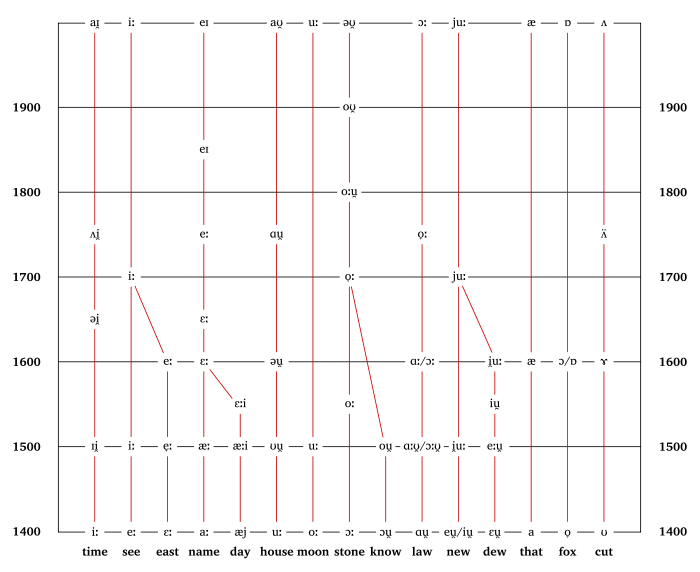Great Vowel Shift
The Great Vowel Shift (also Tudor Vowel Shift) is the term used to describe the vowel changes in the English language that occurred between 1400/1450 and 1700/1750, encompassing the phase of Early Modern English. The terms refer exclusively to the changes in Middle English long vowels. They involve raising or closing of the long vowels. The short vowels shown in the diagram below, unlike the long vowels, undergo lowering or further opening. However, the short vowels change independently of the Great Vowel Shift. New English spelling usually reflects the original phonetic position, e.g. /eː/ to /iː/ (English feel, "feel"), /iː/ to /aɪ/ (English find, "find"), /uː/ to /aʊ/ (English mouse, "mouse"), /oː/ to /uː/ (English moon, "moon").

There are several theories as to the cause and exact course of the Great Vowel Shift. The two classical theories are called push chain and pull chain:
- Thrust chain (formulated by Karl Luick): the middle vowels /eː/ and /oː/ gradually become more closed, displacing /iː/ and /uː/, which become the diphthongs /aɪ/ and /aʊ/.
- Draw chain (formulated by Otto Jespersen): the two most closed vowels, /iː/ and /uː/, diphthongize to /aɪ/ and /aʊ/, and draw the two middle vowels, /eː/ and /oː/, into the more extreme closed positions as a substitute.
More recent theories see the two views as simplistic and assume several smaller independent chains of sound change.
Search within the encyclopedia